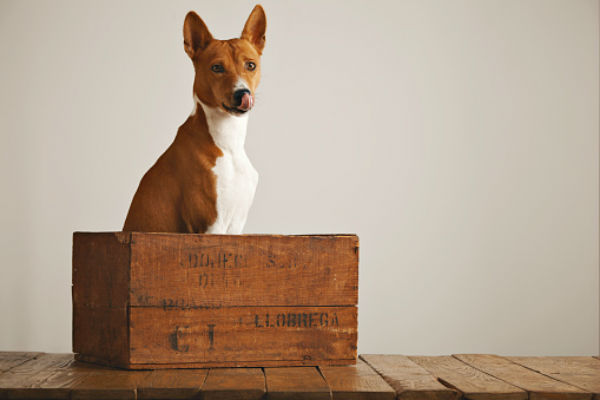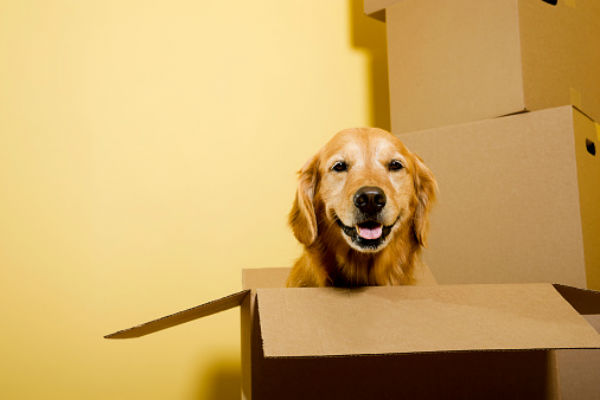Shaping is a great way to teach your dog how to problem solve. Many dogs get stuck in the trap of waiting to be told what to do or waiting for a cookie to appear in front of their nose and lure them to the correct position.
While luring is a great training technique, there's another technique called shaping that encourages a dog to think for himself and try to guess what behavior you would like for him to do. Shaping rewards a dog’s natural curiosity and reinforces him to try new things.
A great way to get started with shaping is using a cardboard box. The most important first step is to make sure your dog is not afraid of the box! If he is, choose a different object that is fairly novel, meaning you shouldn't use your dog’s bed or a toy which he frequently plays with.
Ideas include bowls of various sizes, plastic food storage containers, larger plastic storage containers, or thick books such as phone books or textbooks.

A clicker is a helpful tool for shaping. The click is a very precise sound that marks the exact instant your dog is correct. After you click, you deliver a treat. If you don't use a clicker, you can use a marker word such as “yes” or “good.”
When you get ready to start a shaping session, make sure you have everything prepared before you bring the dog into the room. The item that you are using should be out and accessible, and treats can be in your pocket or a treat pouch. If you're worried about your dog becoming distracted, you can put him on a leash or play the game in a familiar room with few distractions.
When you first bring the dog into the room with the novel object, he or she will more than likely investigate it. This is great! Click and treat any interaction with the object. Instead of feeding the treat to your dog’s mouth, toss the treat on the ground a few feet away from the item. This will encourage your dog to try new things each time he approaches the object, and it keeps the game at a higher energy level!
The interaction could be as simple as glancing towards it, sniffing it, looking at it closely, or as intense as pawing at it, biting it, or knocking it over. Any of these behaviors are OK and should be rewarded.

After a few repetitions, you will likely see the figurative lightbulb above your dog’s head. The dog will start to realize that he is in control of the game, and he can make you reward him just by interacting with a box! He will start to try other things with the box and may get more animated as he interacts; this is a great sign! Keep clicking and treating for all kinds of different interactions with the item. This could include climbing inside the box, sitting in the box or lying down in the box.
If your dog does something especially cute with the item, feel free to select for that. Selecting means that you choose to click and treat only behaviors similar to the cute behavior; this is a great way to come up with new tricks for your dog.
Troubleshooting tips: If your dog is ignoring the item, place the item between you and your dog; this makes it more likely that he will interact with the item in some way. If your dog gets “stuck” and isn't doing anything, try tossing a treat a couple of feet away and moving around the object as your dog comes back.


